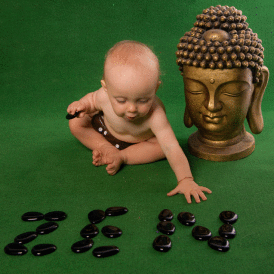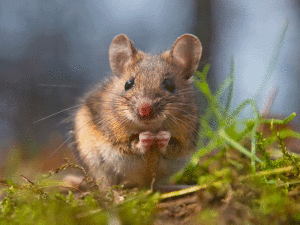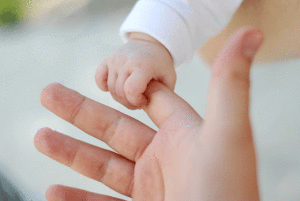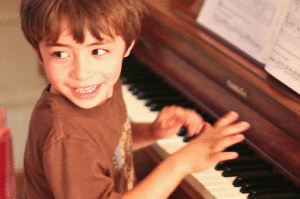I love having girls. The complexities of my twin daughters’ personalities confound and delight me daily. Next year they’ll go to kindergarten, taking one more step toward independence. But, while I love watching them mature into confident and capable girls, my fears about the world they’re growing up in can get the better of me. In the dark shadows of 4 a.m. I can get fixated on eating disorders, cyber bullying, and the violence against women that continues in our culture. I wonder, how can I prepare them for danger without contaminating them with fear? Will I be able to help them hold on to their identities in a culture that, at times, continues to sabotage them?
When my children have exhibited behaviors and temperamental traits that have left me asking grave questions about my capacities as a parent, I’ve turned to Symbio, a San Francisco-based center that supports the mental and emotional health of parents and young children. Formed in 2007 by psychotherapists and child-development experts Noelle Cochran and Lele Diamond, Symbio addresses the constellation of problems that families can face—including difficult behavior, anxieties and developmental challenges—and helps them build positive relationships among one another.
Here, Diamond talks to Red Typewriter about how we can help support our girls as they develop their identities in this complicated and rapidly changing world.

Child psychologist Lulu Diamond is co-founder of San Francisco-based Symbio, a support center for families.
RT: We all want to raise confident, adventure-seeking girls, but we also want to prepare them for the real world. How can we do that without contaminating them with fear?
LD: A lot of it has to do with implicit communication as well as explicit communication. What you say, the things that you do, and the activities you take them to are all part of that explicit communication. But children watch what you do and how you talk about things—that’s the implicit communication we need to monitor. We have to remember that kids, by design, learn from watching their parents, especially very young kids. Research tells us that a lot of what children learn, the biases that they form about who they are, and who other people are—biases about gender, race and other things used to categorize and stratify people—are learned between the ages 3 and 6. We can control, to some extent, their exposure through media. But they’re going to pick up on it. Developmentally, they are designed to sort out their world, and there is a lot of categorizing going on. They want to understand who they are.
We also know that children this age don’t absorb information through didactic learning. They’re learning from what’s modeled. So the implicit communication young girls are picking up on is actually a stronger message than what they’re being told. That doesn’t mean that we shouldn’t be careful about our explicit messaging, but it’s so much easier to let the implicit messaging get away from you. How do they hear you talk about yourself and other people? How do they watch you comment, or not, on messages that comes from someone else: from something someone says, from a picture, from a billboard, from a movie? It’s about what’s happening in your face and in your body. Are you shrugging it off? Do you have some humor? Do you have some confidence around it? Did you stop and consider it carefully? Are you hyper reactive? Those things are really hard to control in the moment. One of the things I say to parents is that some of this is about taking whatever the issue is and doing your own work about it. So you come to a place where you have a clear sense about what your values are, what your goals are, and the choices you’re making. You have to understand what it triggers in you, and how you’re responding. Because your kids—especially sensitive kids, and temperament matters a lot—will pick up on those subtleties that there’s just no way to fake in the moment.
RT: Young girls seem to have so much confidence, but in adolescence it takes a nosedive. How can we counteract that?
LD: Again, I think there are concrete strategies and diffuse strategies. Talk with your kids about what they’re saying about themselves. Get out in front of the questions: Am I pretty? Am I fat? It doesn’t start there. It starts with things that are much more subtle. When a little girl 5 or 6 years old says, “I’m fat.” If you go right for, “No, you’re not” or “You’re exactly the way God made you,” it’s not all that helpful to them, because you’re not entering their world. When kids are getting those messages they’re saying, “Something impacted me, something is in my head.” Have a conversation, such as:
“So and so said I’m fat”
“Well, gosh, what did you think of that?”
“I don’t know.”
“It sounds like someone said that in not a nice way. Do you think you’re fat?”
“Yeah.”
“Really? What makes you think that? Let’s talk about what fat is.”
Take some time on it. Say explicitly, “People think these things and that’s wrong.” But you have to walk that talk. When kids come home with these messages, don’t dismiss it outright. The longer the conversation is, the more impact you have. And then it won’t just be one conversation. So don’t rush in to counter things. Ask questions. What you want is the tone of concerned curiosity, not alarm. If you’re highly reactive, your kid is going to feel like, “Mom is a little anxious about this, and now that I’m talking to mom, I’m feeling a little anxious.” Kids are really good at sensing anxiety, and using anxiety avoidance as an exit strategy. You don’t want that. You want the feeling in their heart to get better when they engage with you. So if their heart is hurting because somebody said something, or they’re a little confused, or they’re feeling a little guilty because it’s something they said, you want that tone of concerned curiosity to be what colors that engagement, so it feels good to your kid to engage with you.
I’m all for limiting exposure to negative messaging, but it can be very difficult to do as children get older. Strength is a mixture of stress and resilience. You can have high stress, high negative messaging, if resilience is high. It’s not about what you don’t let your kids see, but how you do expose them to images, ideas, and experiences. So when girls run into those messages, they’re already equipped with a counter message. When they run into negative messaging they already know it’s isn’t true or right. Instead they have the sense of “This is a community I feel connected to. These are images I feel connected to. This is how I know myself.” If kids already have that, it’s much less likely that negative messages will take root, because there’s already something there in that spot.
“You want it to feel good to your kid to engage with you.”
RT: Are there any challenges specific to the early elementary school years?
LD: Kindergarten and first grade vary a lot from school to school. But one of the things that happens between the ages of 5 and 7 is that children do a lot of identity consolidation. They look to their peer group for mirroring and absorb information about how they’re seen. They also try to control how they’re seen to get the reflection they want. They begin to tell themselves a story about themselves based on how others see them. And they begin to project the story that they want others to see about themselves. So, [try to be aware] of the messages your children are getting from their peers, because they can be very potent. Again, it’s not about saying “that’s true” or “that’s not true.” Your voice isn’t going to be as strong as the peer voice. You have to be able to have these conversations on an ongoing basis.
You should also try to find out the culture of the classroom. What does your kid’s classroom feel like? What’s going on? Some teachers are really wonderful about communicating that in a textured way. Others aren’t. So you have to find out. And don’t assume that it’s the same as what you see during play dates. If you have a kid in a classroom culture that you’re not comfortable with, you want to think about how to help your child build resilience.
RT: How do you do that?
LD: What are the positive messages you want them to have? For example, if there’s huge stratification between the boys and the girls, and girls are getting a lot of messages about “Run like a girl,” “Throw like a girl.” How do you talk about yourself and know yourself? If you’re in a two parent household, how do they talk about you? Get your girls engaged in sports or martial arts. It doesn’t mean you can’t do ballet, but look for ballet that has boys and girls. And talk explicitly about what it means to “run like a girl.” You put one foot in front of the other and you run really fast. That’s what it means. Kids are very easy to influence at that age, which is the good news and the bad news. They are little sponges, so if you expose them to what you want them to soak up, it’s protective.
Have them around older kids and adults that they can look up to and have as role models. For a 6- or 7-year-old girl to have a 12-year-old girl say to her, “You’re cool, “You’re a really good athlete,” or “You’re really smart,” is very powerful. To have that 12-year-old girl, who is fighting her way through adolescence, have a 17-year-old girl say, “I developed early too, this was hard for me, this is what you need to do to take care of yourself.” Role models that are one step ahead developmentally can have a huge influence.
If your kid is running up against being teased or being bullied, find out specifically what they’re hearing. Help them come up with strategies they feel comfortable with. It’s not about what you want them to do. It’s about them finding something that works. It’s less important what they do, than that they do something.
RT: The mother-daughter relationship is so complicated. There’s a lot of love, but also a lot of tension. How do we keep it healthy?
LD: One thing I’d recommend is to normalize some of the tension. Don’t make it scary that friction is there. Make it something you can talk about. Make it something you can recover from. If you know you can get out of trouble with each other, then you don’t have to be so afraid to get into trouble with each other. Then there’s a much broader range for your relationship. And, again, the earlier you can start that the better. Do you know how to argue? Do you know how to make up? When you don’t listen to each other, can you notice it, and acknowledge it? Can you, as a parent, change your mind? Where you hold the boundary of your authority is a constantly changing target. You have to be constantly reevaluating. So when your children are little you want your authority to be very substantial and firm.
Make no mistake, we’re not sharing decision-making responsibilities, except in a very narrow range, with a 2-year-old. But as your child gets older, and you’re broadening that range, there’s friction about that edge. It’s especially tricky for mothers and daughters who are trying to be friends. You want to think about giving your child enough freedom, but until your child is grown, don’t make the mistake of being your child’s friend more than your child’s parent. How much your 14-year-old hates you when she slams the door in your face because you told her ‘no’ is absolutely no predictor of poor parent-child relationships in the years to come. If anything it’s protective, because that’s the parent who’s willing to tolerate the negative effect for their kid’s own good.


























